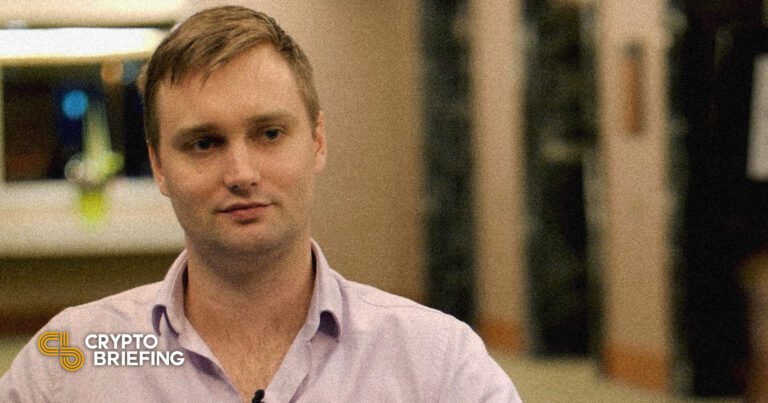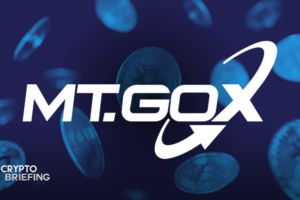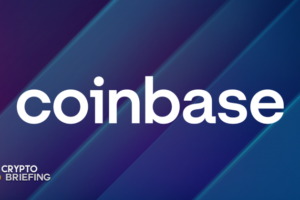
Key Takeaways
Following the Treasury Department’s move to sanction Tornado Cash earlier this month, MakerDAO co-founder Rune Christensen has proposed an “Endgame Plan” to save DAI from regulatory capture.
The plan would see MakerDAO lend out DAI against real-world assets to accumulate ETH, with the eventual goal of turning the stablecoin into a free-floating asset.
The proposal has received support and pushback from members of the MakerDAO community.
Share this article
The proposal addresses Rune Christensen’s previous concerns about authoritarian risks to MakerDAO protocol and the amount of USDC backing DAI.
The “Endgame Plan”
DAI cannot remain a stablecoin forever, according to one of its co-creators, Rune Christensen.
The MakerDAO co-founder shared a new post on the subject on the protocol’s governance forums Tuesday, outlining his idea for a new plan that could see the DAI stablecoin become a free-floating asset in the future.
Titled “Endgame Plan timeline to free floating Dai,” the proposition focuses on lending DAI against real-world assets (RWAs) to bolster the protocol’s revenue. It suggests using the profits generated from issuing loans to acquire more ETH to use as collateral to back DAI. Under Christensen’s plan, the degree to which MakerDAO is successful in accumulating ETH over the next three years will determine whether or not it should consider letting DAI drift from its dollar peg to become a free-floating asset.
The plan includes three different collateral strategies—dubbed Pigeon Stance, Eagle Stance, and Phoenix Stance—that lie on a spectrum between high RWA exposure and none. As Christensen puts it, more RWA exposure enables higher growth for the MakerDAO protocol, but at the cost of reduced resilience.
Pigeon Stance, the most lenient of the three strategies, would be MakerDAO’s default stance. It prioritizes maximum growth with unlimited exposure to RWA loans. Eagle Stance finds a balance between growth and resilience by limiting Maker’s RWA exposure to 25% of all loans. Phoenix Stance is the most conservative, stipulating that the protocol takes on no sizable exposure to RWAs.
Christensen’s plan starts by putting MakerDAO into Pigeon Stance for three years. Here, the protocol would attempt to amass as much ETH collateral as possible to make DAI resilient to “authoritarian threats.”
Such threats could include pressure from government agencies to comply with stringent regulations or sanctions that force centralized stablecoin issuers like Circle to freeze USDC funds held in MakerDAO’s vaults for non-compliance. Christensen had previously commented on how MakerDAO’s reliance on USDC could pose a serious threat after the stablecoin issuer froze funds deposited into privacy protocol Tornado Cash earlier this month. “If the protocol reaches 75% decentralized collateral organically from the accumulation of ETH during Pigeon Stance, then it can switch to Eagle Stance without resulting in Dai going free floating,” Christensen’s post read.
However, if MakerDAO cannot hit the 75% decentralized collateral threshold, it might make sense to let DAI drift from its one-to-one peg with the dollar. Regardless of what happens, Christensen’s plan specifies that DAI will remain pegged to the dollar for at least the next three years. After then, the timeline for turning DAI into a free-floating asset could also be delayed if there is no “immediate authoritarian threat.”
MakerDAO and Regulation
The Endgame Plan is part of a wider discussion on the MakerDAO forums addressing whether DAI may be forced to give up its dollar peg to prioritize decentralization. Christensen has argued that financial regulation trending toward a paradigm of “either you’re with us or you’re against us,” combined with DAI’s inherent censorship resistance means the stablecoin will inevitably need to break its peg with the dollar to avoid regulatory oversight that it will be unable to comply with.
Christensen’s proposal has received some pushback. “I disagree that free floating DAI will be of much help. Why would an authoritarian government disallow fiat pegged stable assets, but permit free floating stable assets (or even volatile base crypto assets for that matter) when they still undermine government control over the monetary system?” asked MakerDAO member monet-supply. “Tornado Cash had extremely little exposure to RWA and is highly decentralized, but that didn’t stop it from being sanctioned. I don’t see how free floating Dai would prevent Maker from experiencing the same fate,” CodeKnight wrote.
However, other MakerDAO members agreed more with Christensen’s outlook. “It’s so good to finally see this recognized by weighty MKR voting power. I’ve been in the minority warning about this exact risk for years,” said user brianmcmichael. Ultimately, as user SebVentures, explained, much of the discussion boils down to a business decision that MKR holders need to make. “On one side, you decrease the value of the product (DAI) to increase the odd[sic] of survival. On the other side, you take a possible higher regulatory risk to growl,” he said.
Since many DeFi users have come to expect DAI will keep its peg to the dollar, moving away from this paradigm, even if necessary, could come at a significant cost. With solid support both for and against letting DAI drift from its peg, the debate over how MakerDAO should prepare itself for an uncertain future will likely continue for some time yet.
Disclosure: At the time of writing this piece, the author owned ETH and several other cryptocurrencies.
Share this article
The information on or accessed through this website is obtained from independent sources we believe to be accurate and reliable, but Decentral Media, Inc. makes no representation or warranty as to the timeliness, completeness, or accuracy of any information on or accessed through this website. Decentral Media, Inc. is not an investment advisor. We do not give personalized investment advice or other financial advice. The information on this website is subject to change without notice. Some or all of the information on this website may become outdated, or it may be or become incomplete or inaccurate. We may, but are not obligated to, update any outdated, incomplete, or inaccurate information.
You should never make an investment decision on an ICO, IEO, or other investment based on the information on this website, and you should never interpret or otherwise rely on any of the information on this website as investment advice. We strongly recommend that you consult a licensed investment advisor or other qualified financial professional if you are seeking investment advice on an ICO, IEO, or other investment. We do not accept compensation in any form for analyzing or reporting on any ICO, IEO, cryptocurrency, currency, tokenized sales, securities, or commodities.
See full terms and conditions.















